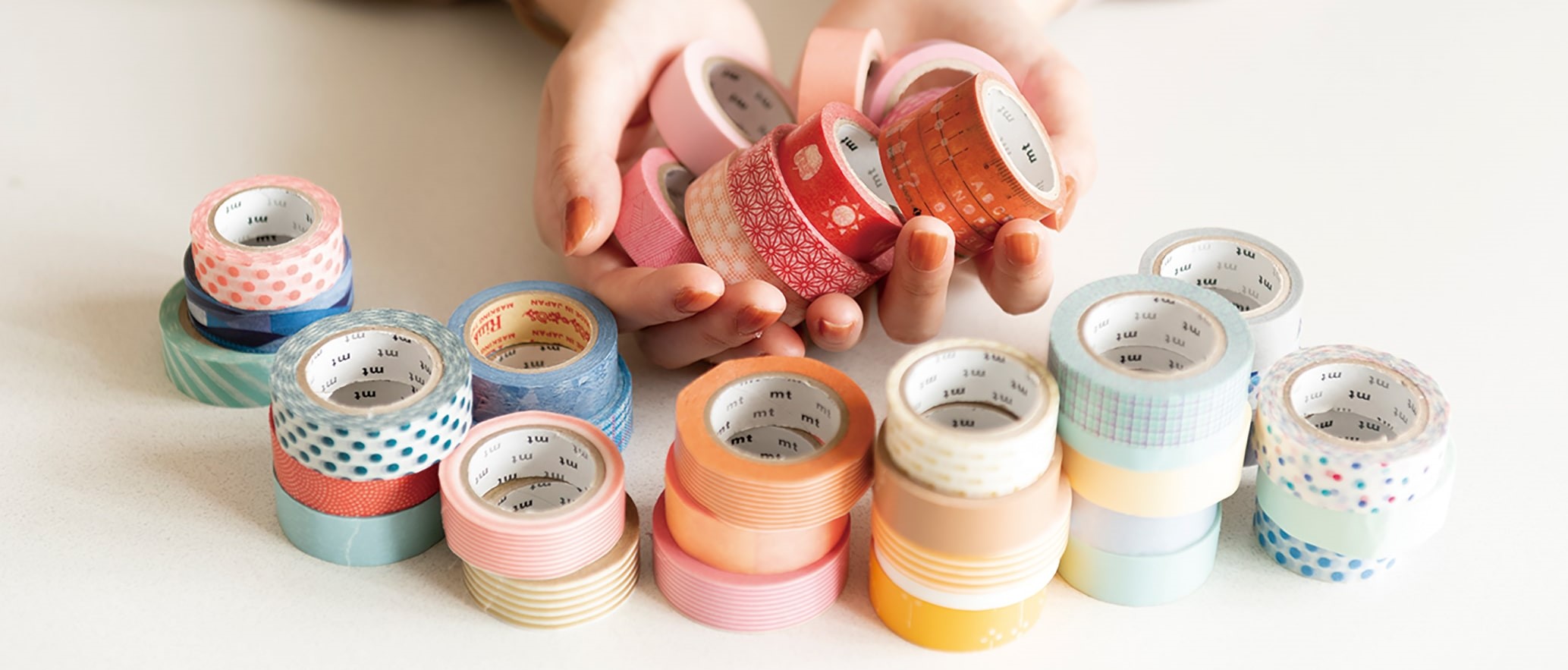

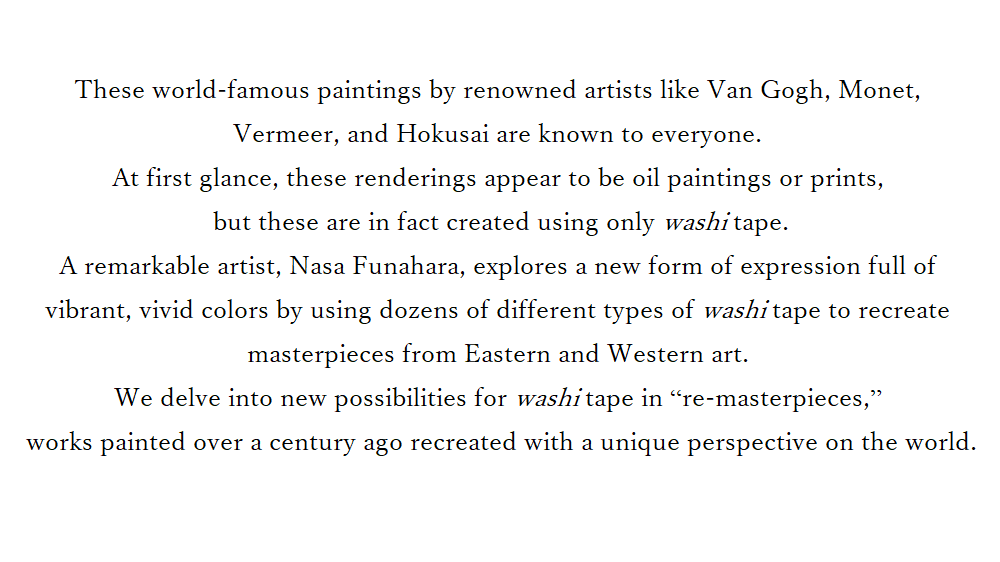

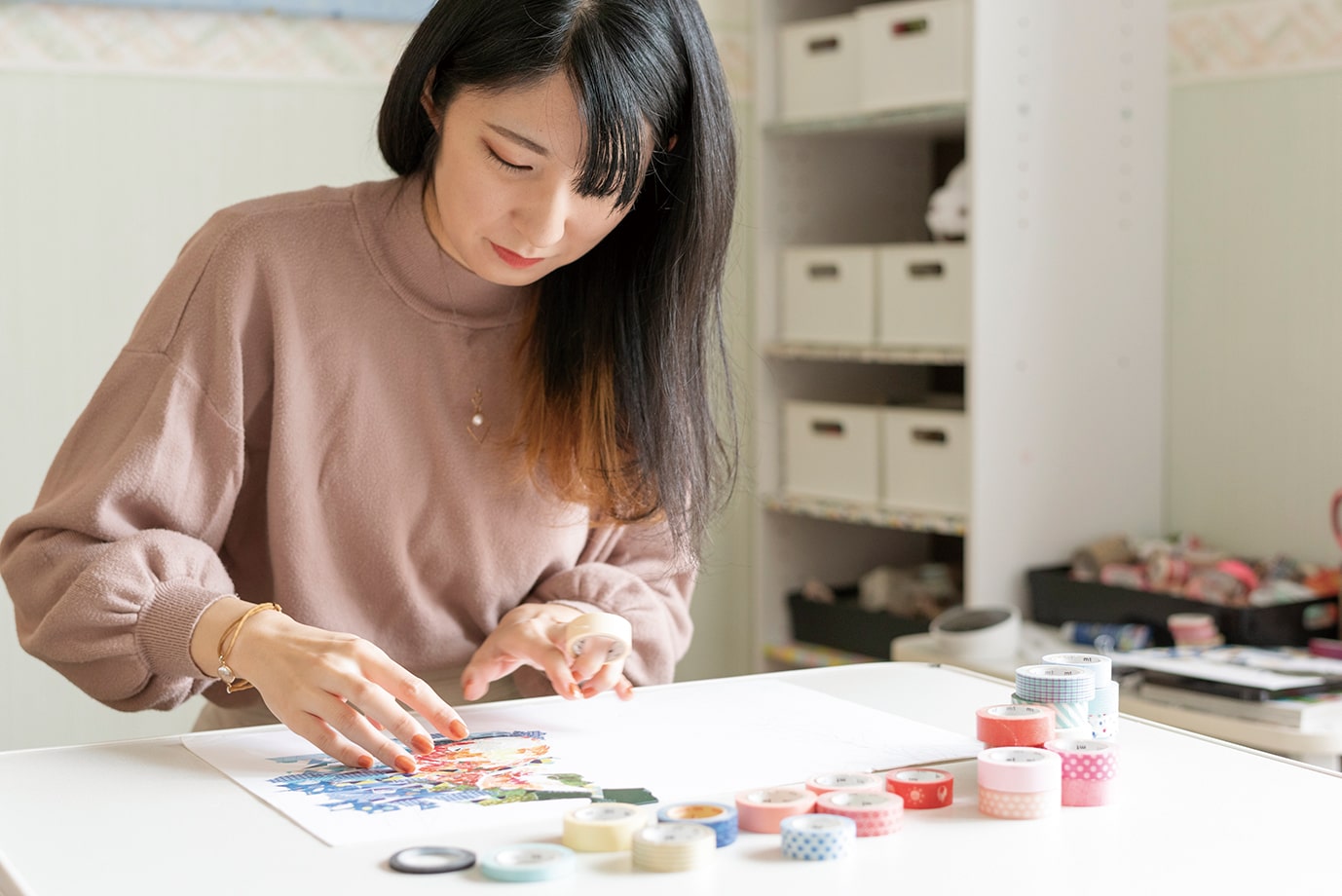
Nasa Funahara
Washi tape artist
Graduated from Musashino Art University College of Art and Design in painting in 2015. Funahara began creating washi tape art while in university, and her work has been widely featured in various media in Japan and overseas. After graduating and working at an office for three years, she struck out on her own as a washi tape artist in 2018. Her prolific work includes exhibitions at art museums and art events, collaborative projects with companies, and creating her own original washi tapes.Graduated from Musashino Art University College of Art and Design in painting in 2015. Funahara began creating washi tape art while in university, and her work has been widely featured in various media in Japan and overseas. After graduating and working at an office for three years, she struck out on her own as a washi tape artist in 2018. Her prolific work includes exhibitions at art museums and art events, collaborative projects with companies, and creating her own original washi tapes.
■Online gallery
https://awrd.com/creatives/user/32706

With its long fibers and translucency,
washi can be layered to blend the colors above and below,
creating delicate coloring with depth.
Washi tape is a common paper-based adhesive tape that was originally used for masking off sections of a surface that are to remain free of paint. More recently, though, washi tape has become a common stationery item popular with women, as it is easy to apply and remove repeatedly without damaging surfaces or peeling off paint. It now comes in many colorful and stylish designs.
Stationery stores and variety shops carry a wide selection of washi tape in different colors and patterns. More and more people are turning to this tape to customize their homes, using it to decorate small items orpeapplying it to wallpaper as an interior design accent.
"Washi tape allows you to freely express your individuality," says Nasa Funahara, who has attracted the attention of the art scene in Japan and abroad for her recreations of world masterpieces using only washi tape. Dozens of different tapes are lined up like paints on a palette. From these, she selects one that matches the painting, tearing bits off by hand and applying them to the canvas over and over to create stunning mosaic-like works of art. Her work is characterized by her unique use of vibrant and deep colors. Thanks to the translucency and long fibers of washi paper, the colors and patterns of the tape blend together as it is layered, giving play to contrast in light and dark and changes in hue that diverge from the original paintings.
Much of Funahara’s work is based on iconic paintings from both Eastern and Western art history. Asked why, she says, “Many people feel that paintings and ukiyo-e woodblock prints are too difficult for them to understand. I hope that encountering my work piques people’s interest in the original paintings. I want to create opportunities for people to enjoy art more easily.”

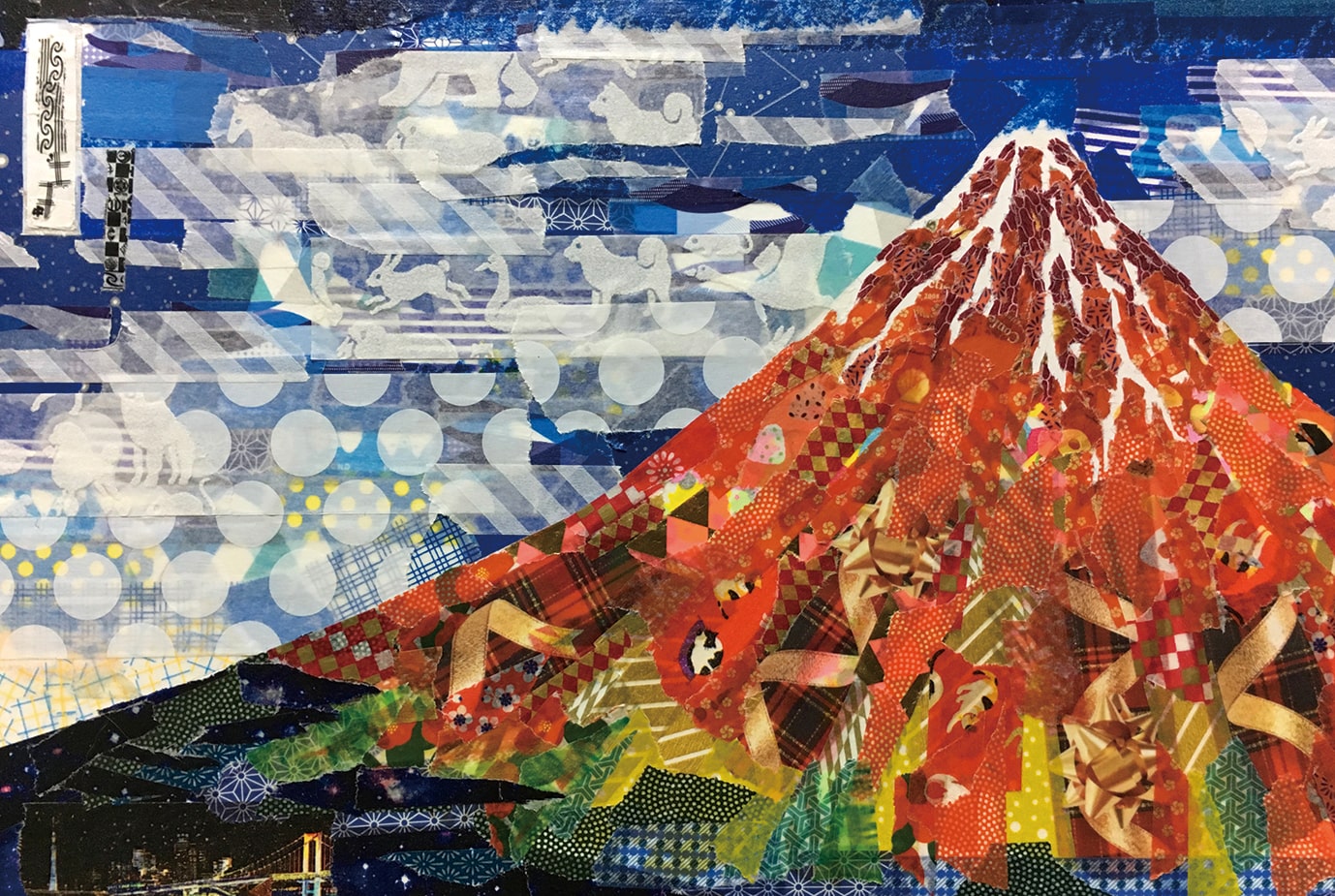
Fugaku sanjurokkei, gaifu kaisei(“Thirty-six Views of Mount Fuji: Fine Wind, Clear Morning”)(2019)
210×297mm
Ukiyo-e woodblock print, popular the world over. Though maintaining a sense of unity throughout the work, this is an arrangement of vivid colors not found in the original work.
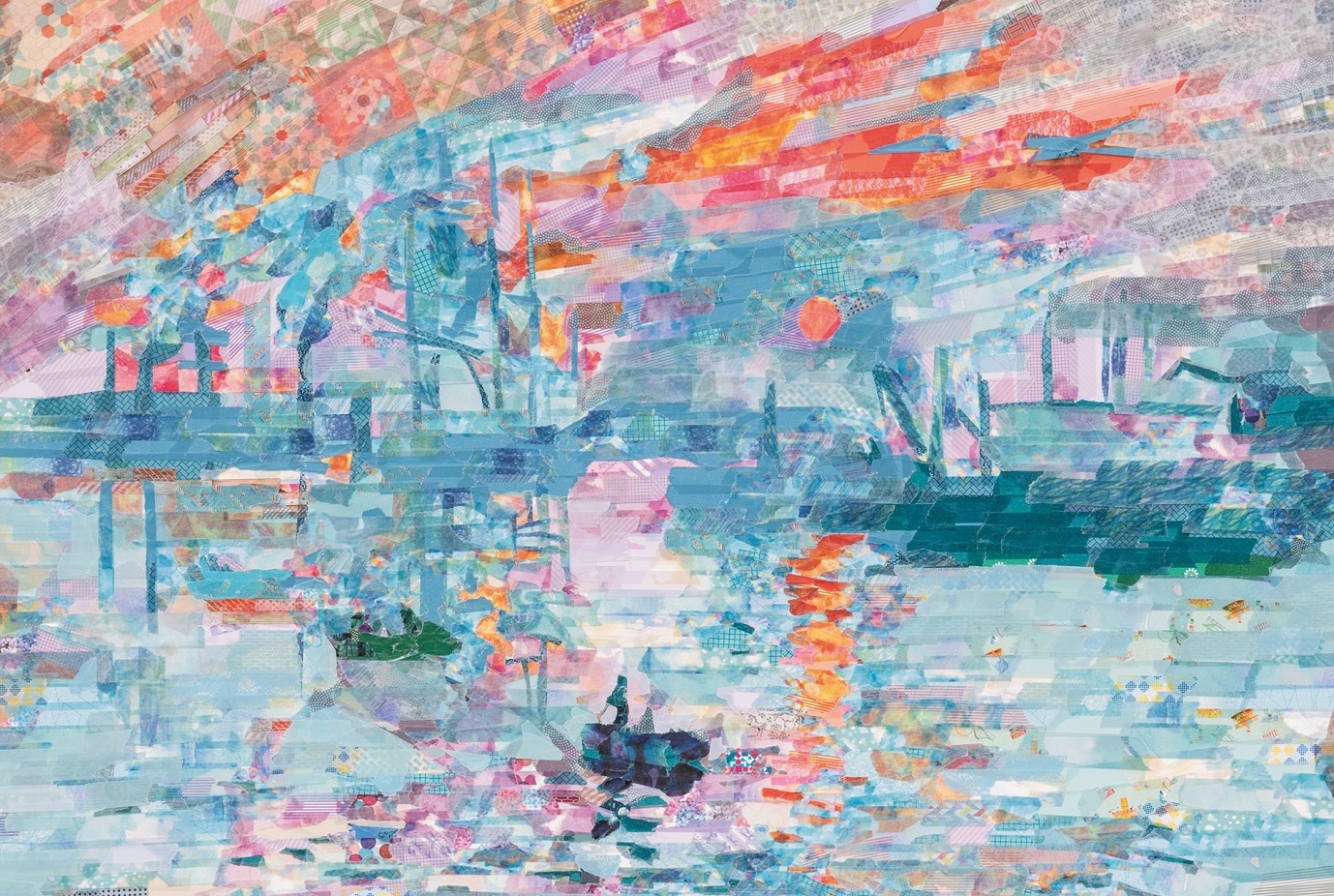
Impression, Sunrise(2020)594×841mm
Oil painting by Monet. Funahara uses some 40 different types of washi tape to recreate the look of oils in the gradation of the hazy landscape and the pale light of the sun.
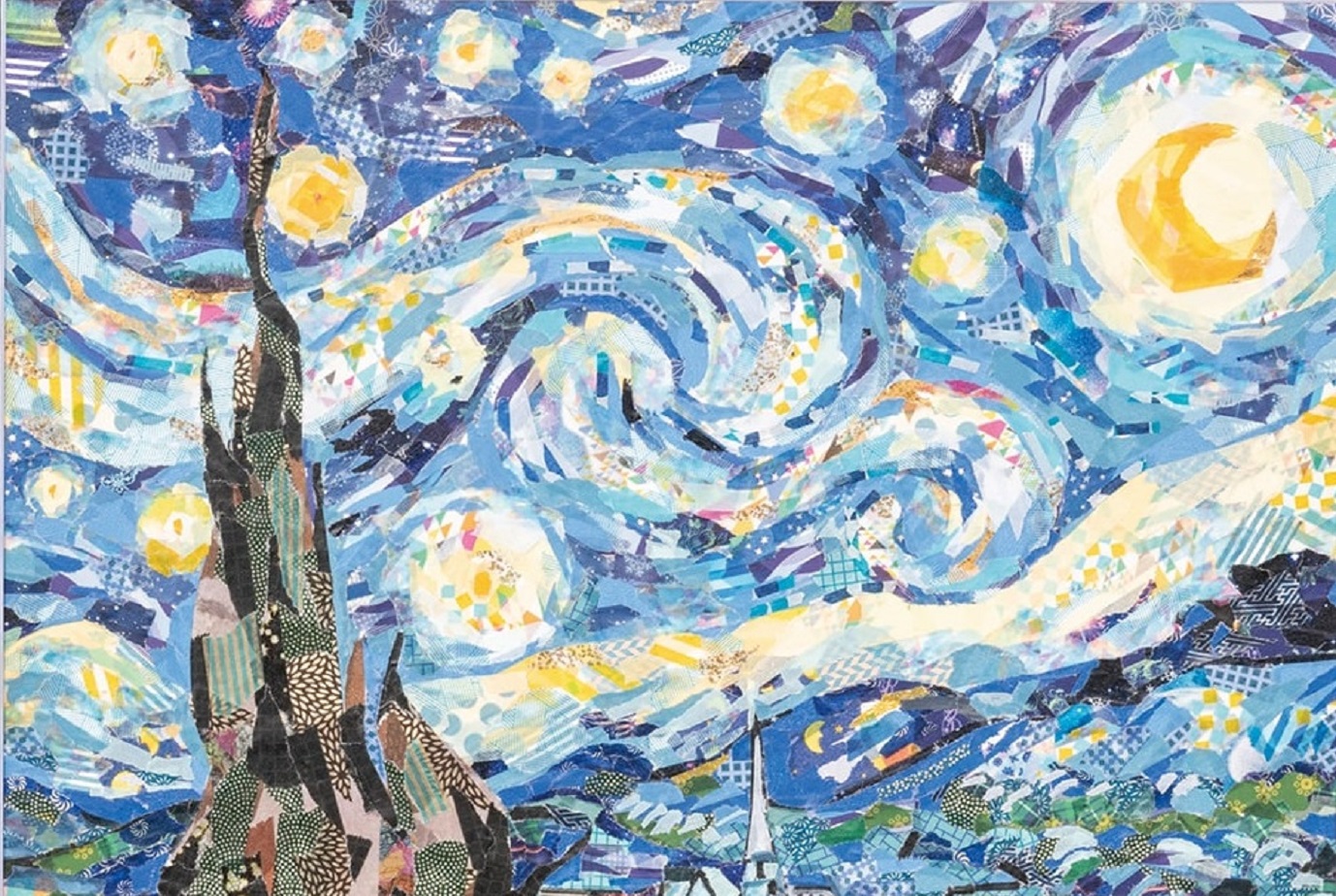
The Starry Night(2020)
297×420mm
One of the most famous paintings in the history of western art, created by Van Gogh. Painted in blacks in the original, the large cypress trees are done in a collage of variously patterned washi tape.

Funahara began creating washi tape art when she was an art college student. “My first piece was for a school project. I created a copy of the Mona Lisa using washi tape that I had laying around. That piece was displayed at the university festival and picked up by an Internet news site, so many people heard about it.” Having been featured many times on TV programs, as well as in U.S. and French magazines, Funahara’s works have attracted fans the world over. After graduating university and working in an office for three years, she left to pursue her art and has promoted her work in art museum exhibitions, at art events, and through collaborative projects with washi tape manufacturers.
Funahara's works are a mixture of the textural dimension of oil paintings, the softness of hand-torn washi, and the playfulness of free thought. “From a distance, my work looks like oil painting, but as you get closer, you realize it is actually washi tape, and you discover new patterns and elements. My pieces can be enjoyed on two different levels, and I hope people will see them in person.”

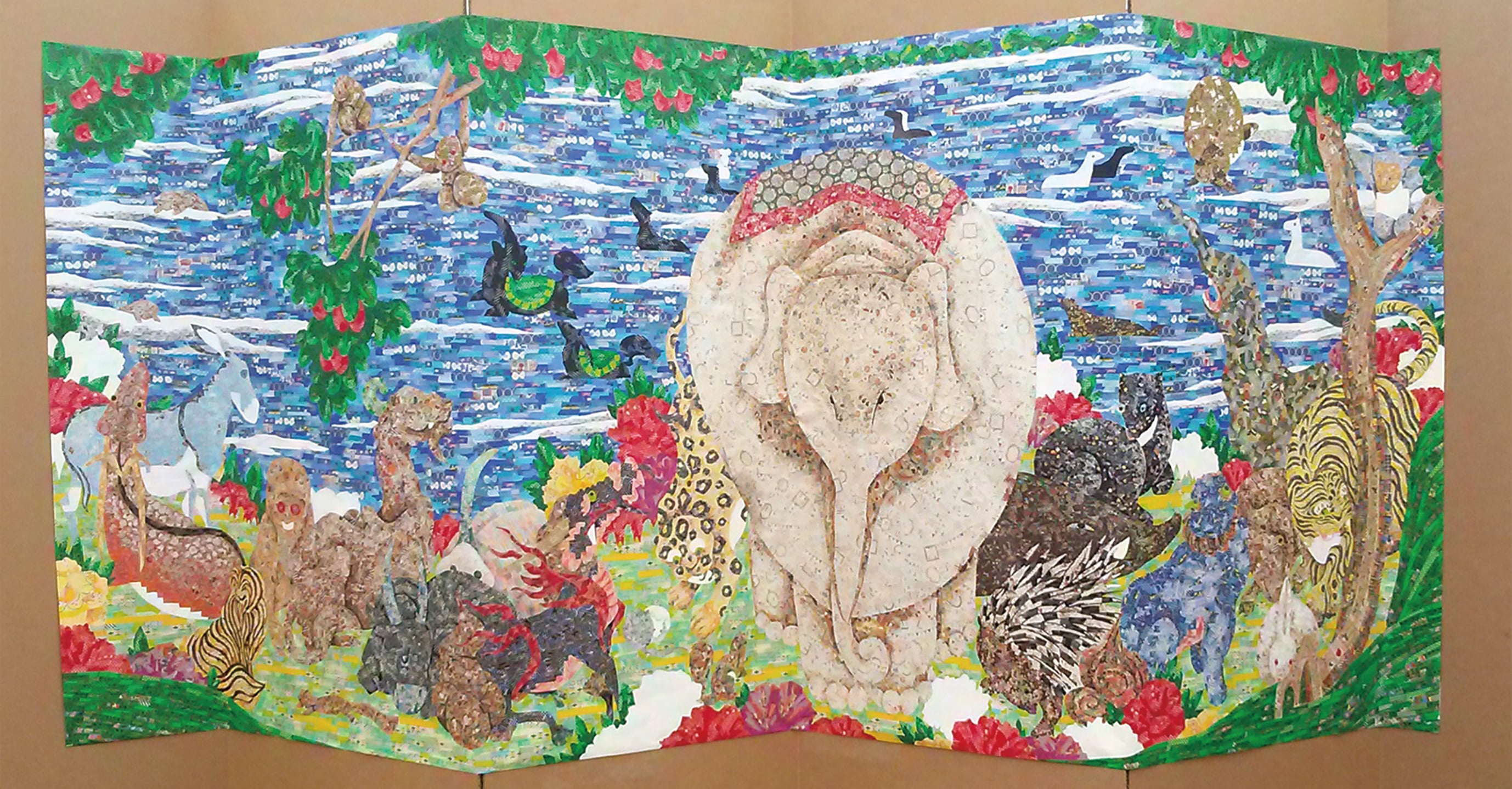
Choju kabokuzu byobu (“Birds, Animals, and Flowering Plants in Imaginary Scene”) (2015)
Approx. 1800×4500mm
Funahara’s art college graduation project. As in Ito Jakuchu’s work, the white elephant and accompanying creatures painted on a six-panel folding screen are conveyed in fresh, vibrant colors.

Funahara began creating washi tape art when she was an art college student. “My first piece was for a school project. I created a copy of the Mona Lisa using washi tape that I had laying around. That piece was displayed at the university festival and picked up by an Internet news site, so many people heard about it.”
Having been featured many times on TV programs, as well as in U.S. and French magazines, Funahara’s works have attracted fans the world over. After graduating university and working in an office for three years, she left to pursue her art and has promoted her work in art museum exhibitions, at art events, and through collaborative projects with washi tape manufacturers.
Asked what she plans to do in the future, Funahara says, “With the pandemic, for the time being, I will mainly sell my work online and promote it on my online gallery. But I’d like to create more opportunities for people to see my work in person, with solo exhibitions and other events. I also want to hold workshops. Washi tape art is something people of all ages and abilities can easily enjoy. This type of art is being used in public health and education, and I want to share the joy of creating art with as many people as I can.”
From an industrial material to a decorative tool for customizing everyday items to an artistic medium—washi tape is increasingly used for more purposes, thanks to artists who think outside the box.
